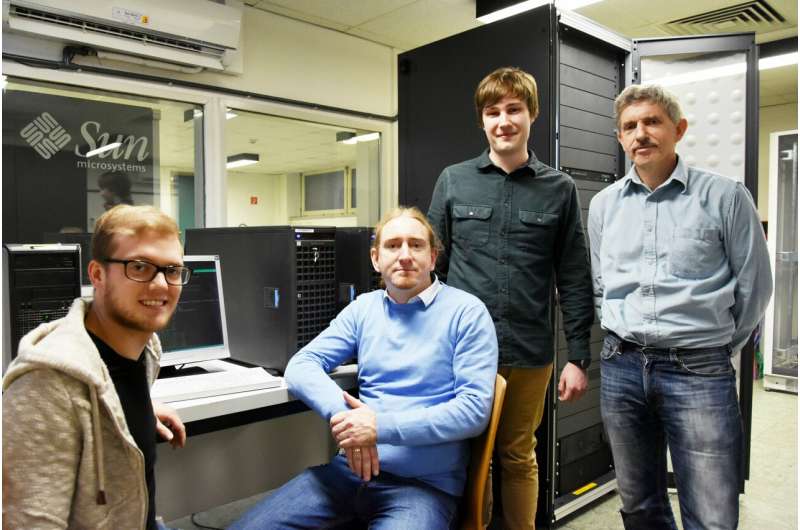Physicists discover new effect in the interaction of plasmas with solids

Plasmas—hot gases consisting of chaotically-moving electrons, ions, atoms and molecules—comprise the interiors of stars, but scientists can create them artificially using special equipment in the laboratory. If a plasma comes in contact with a solid, such as the wall of the lab equipment, under certain circumstances, the wall is changed fundamentally and permanently: Atoms and molecules from the plasma can be deposited on the solid material, or energetic plasma ions can knock atoms out of the solid, and thereby deform or even destroy its surface. A team from the Institute of Theoretical Physics and Astrophysics at Kiel University (CAU) has now discovered a surprising new effect in which the electronic properties of the solid material, such as its electrical conductivity, can be changed by ion impact in a controlled, extremely fast and reversible manner. Their results were recently published in Physical Review Letters.
For more than 50 years, scientists from the fields of plasma physics and materials science have been investigating the processes at the interface between plasmas and solids. However, until recently the processes that occur inside the solid have been described only in a simplified manner. Thus, accurate predictions have not been possible, and new technological applications are usually found via trial and error.
Kiel scientists have also been investigating the plasma-solid interface for many years, developing new experimental diagnostics, theoretical models and technological applications. But in their recently published study, the research team led by Professor Michael Bonitz achieved a new level of simulation accuracy. They examined the processes in the solid with high temporal resolution and could observe in real time how solids react when they are bombarded with energetic plasma ions.
To describe these ultrafast processes on the scale of a few femtoseconds, one-quadrillionth of a second, the team applied precision many-particle, quantum-mechanical simulation methods for the first time. "It turned out that the ions can significantly excite the electrons in the solid. As a consequence, two electrons may occupy a single lattice position, and thereby form a so-called doublon," explained Bonitz. This effect occurs in certain nanostructures, for example, in so-called graphene nanoribbons. These are strips made from a single layer of carbon atoms, which have possible applications in nanoelectronics due to their unique mechanical and electrical properties that include extremely high flexibility and conductivity. Through the controlled production of such doublons, it may become possible to alter the properties of such nanoribbons in a controlled way.
"In addition, we were able to predict that this effect can also be observed in optical lattices in ultra-cold gases," said Bonitz. Thus, the results of the Kiel scientists are also of importance even beyond the boundaries of the field of plasma-solid interaction. Now, the physicists are looking for the optimum conditions under which the effect can also be verified experimentally in plasmas created in the laboratory.
More information: Karsten Balzer et al, Doublon Formation by Ions Impacting a Strongly Correlated Finite Lattice System, Physical Review Letters (2018). DOI: 10.1103/PhysRevLett.121.267602
Journal information: Physical Review Letters
Provided by Kiel University



















